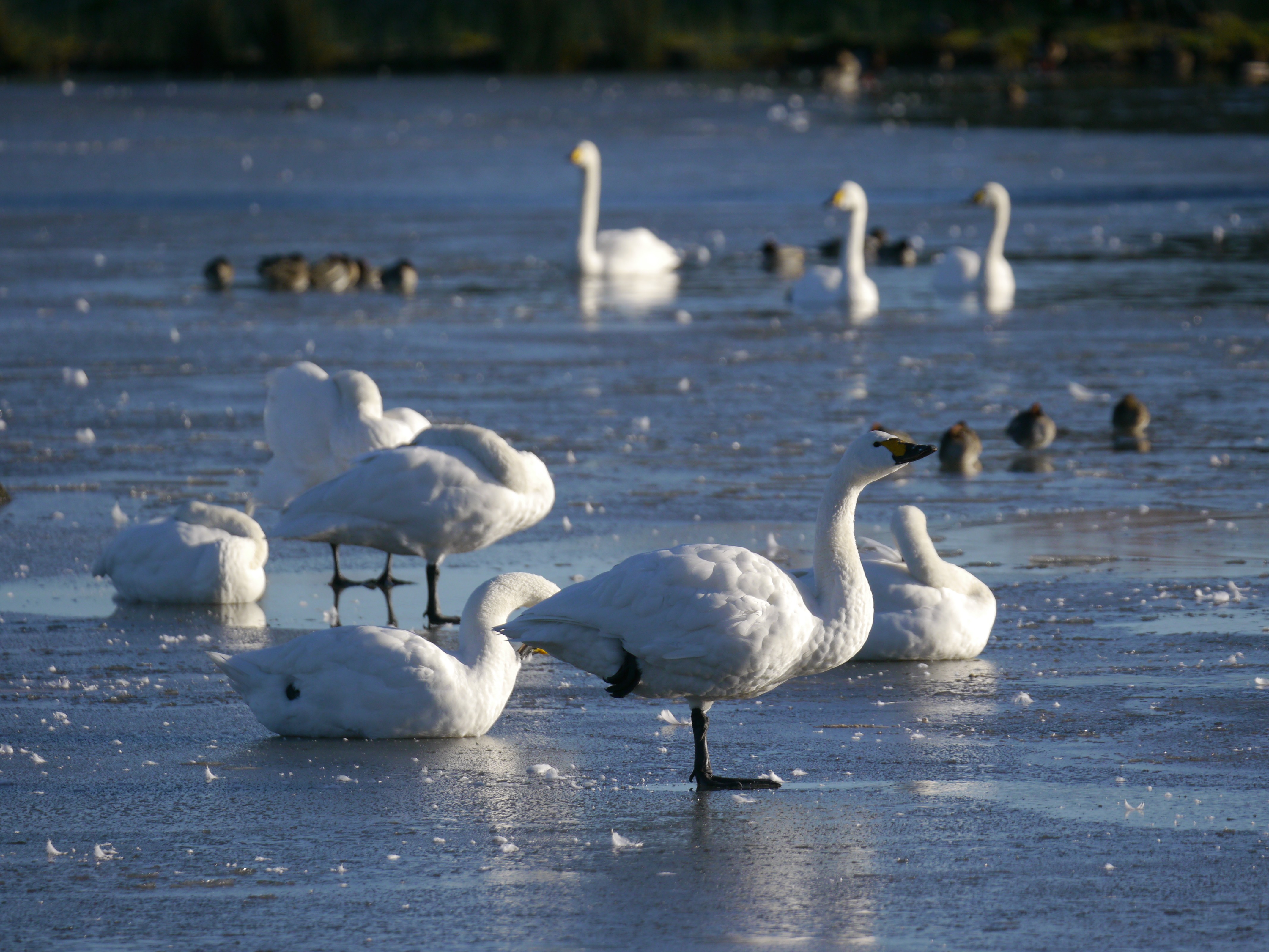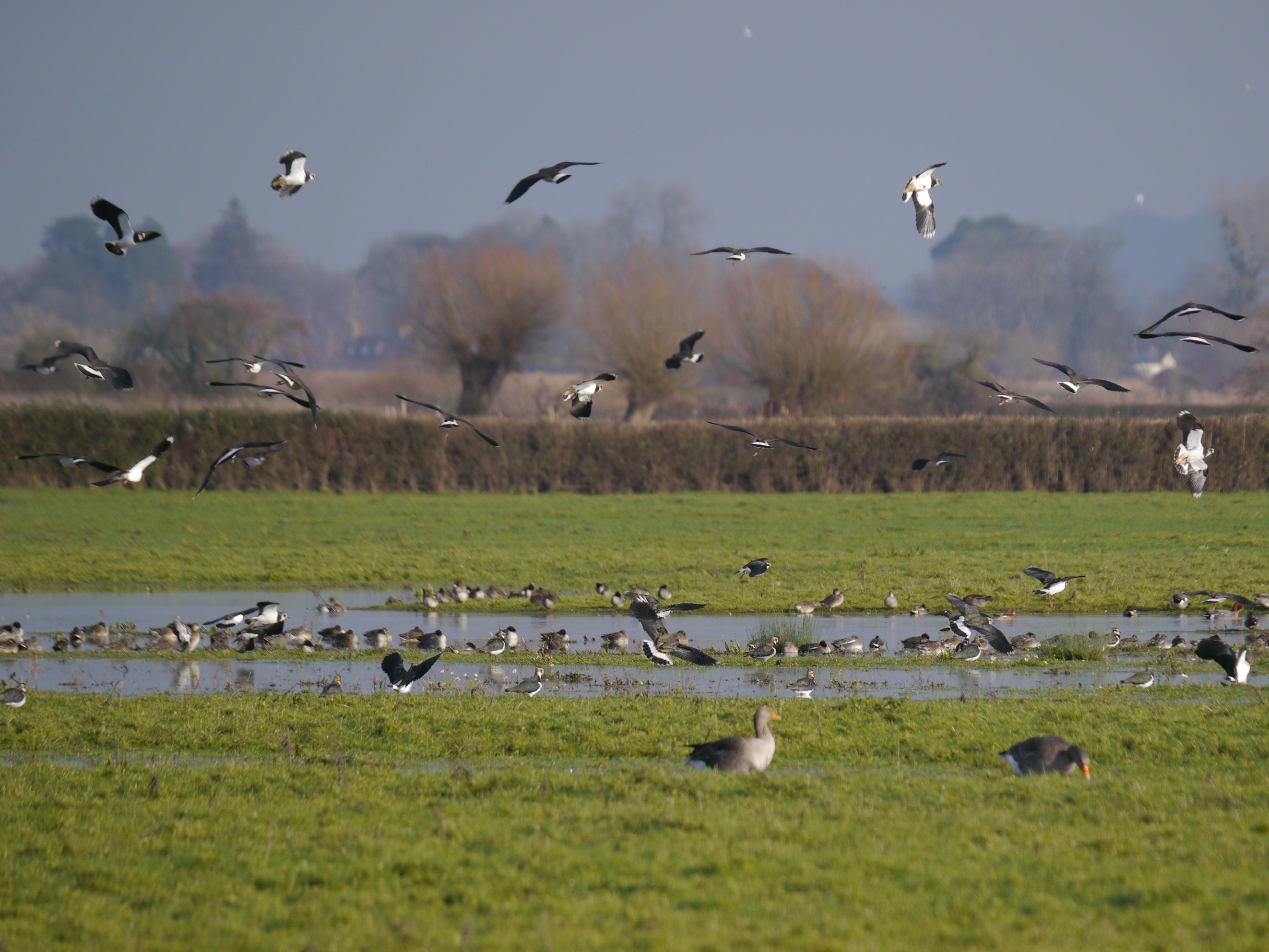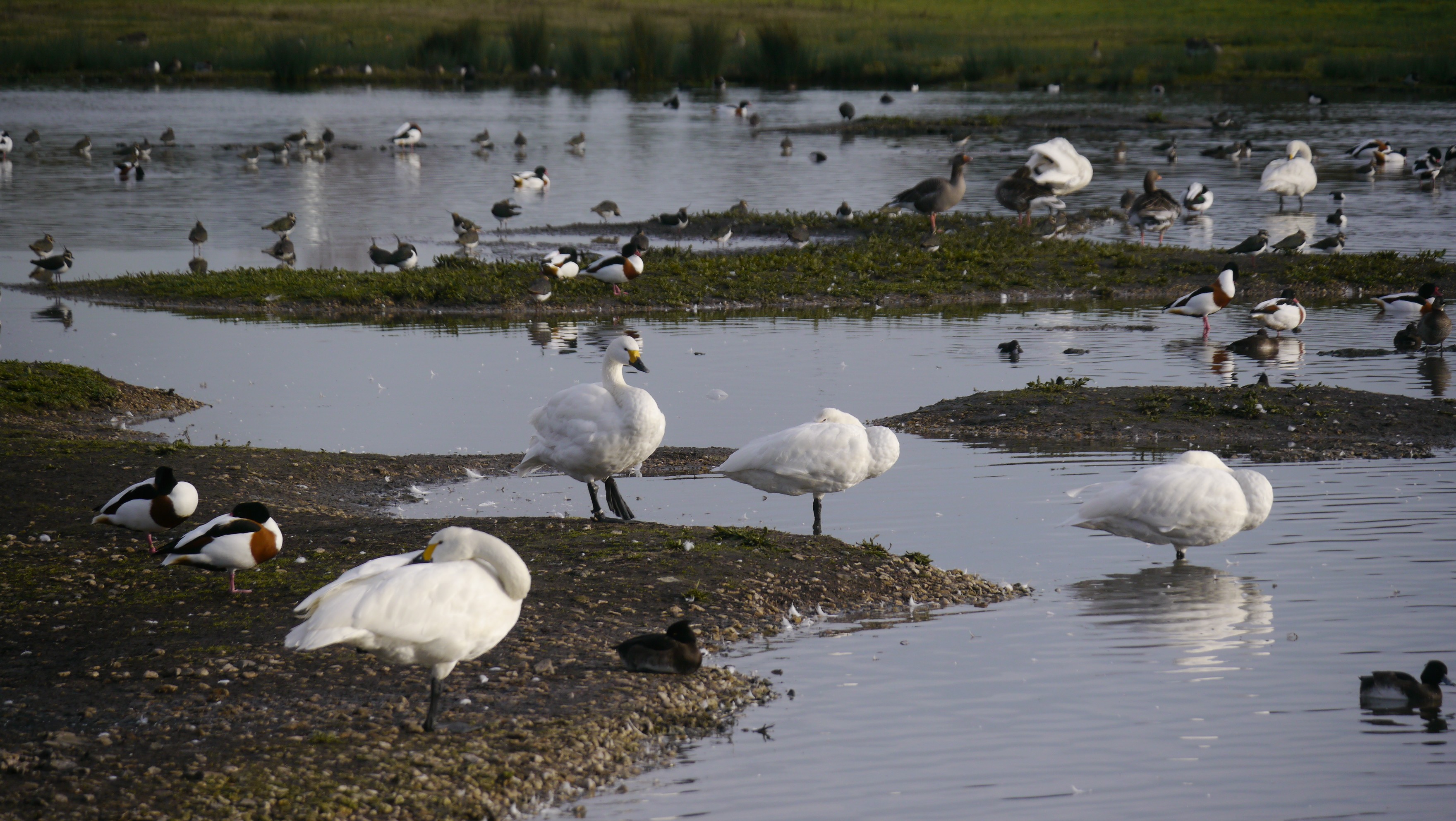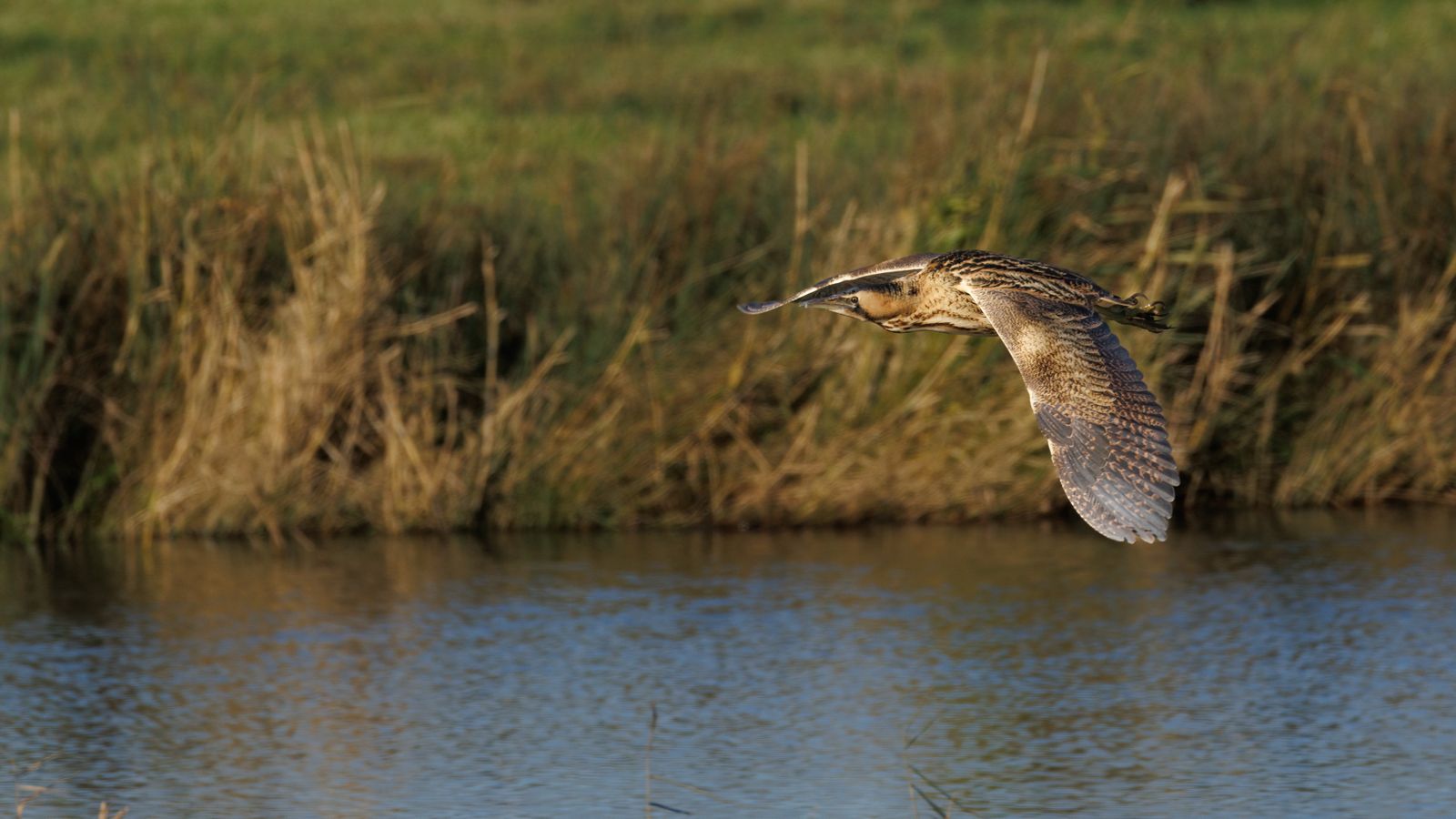Avocets keep trying
Despite a high level of predation the nesting Avocets are persistent, new nests appearing where they haven't nested so far this year.
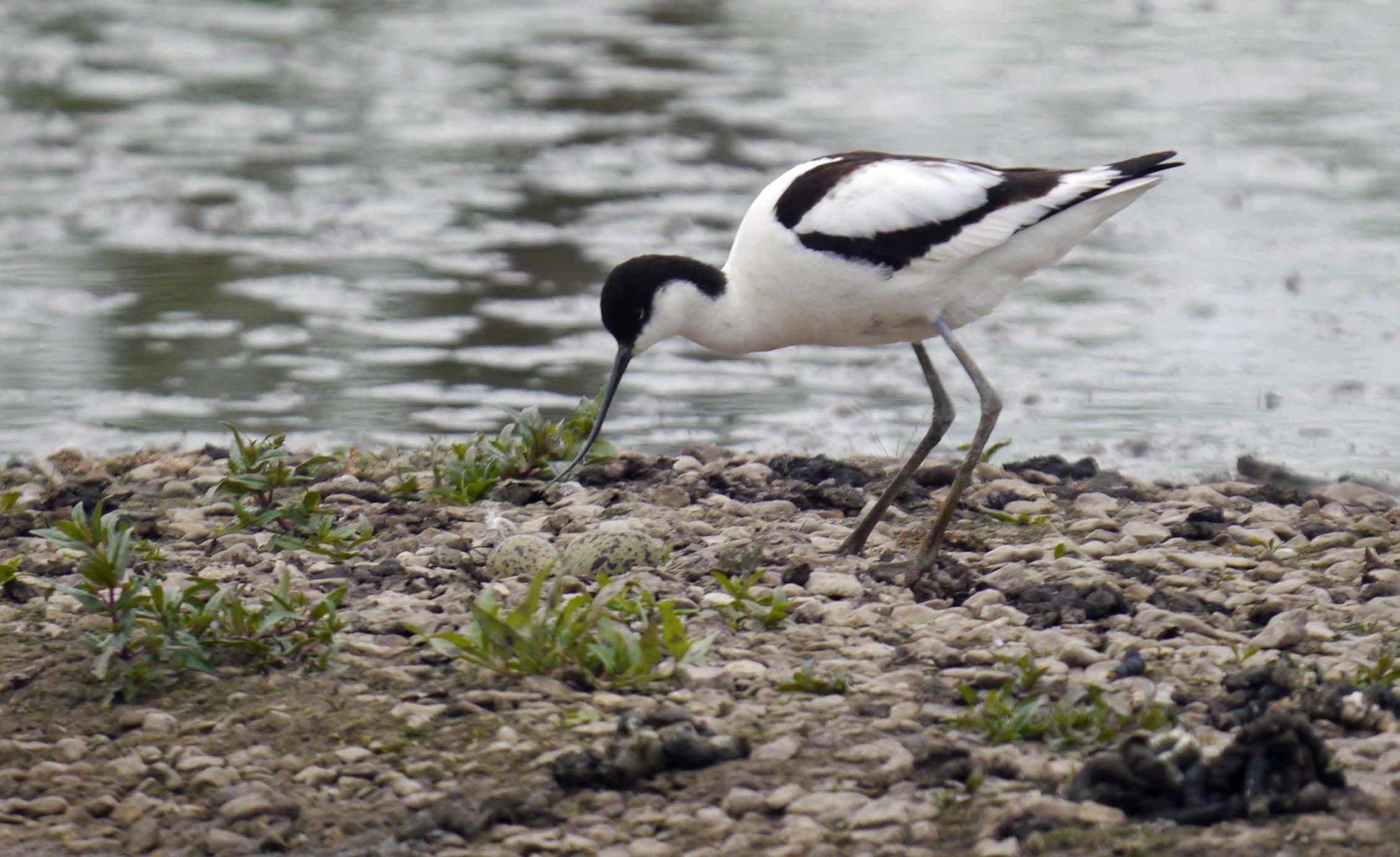
The Avocet flock is distributed across a few main sites with the estuary now becoming a favoured feeding place at low tide. The South Lake, Rushy and Dumbles scrape has been the favoured haunt of this pied wader during the breeding season but predation from crows, large gulls, cranes, fox and stoat has reduced the number of chicks reaching the safer stage of their young lives. The Avocets have branched out with new colonies appearing on the Tack and Top New Piece, the latter sites have better water control infrastructure thanks to the systems we have put in place in recent years. Water has been in short supply this spring, we had very little rain until June so many island nest sites dried up to form land bridges and chicks have been exposed on the drying scrapes leading to an increase in loss. The season is far from over, we watch the latest batch of nests with fingers crossed.
At least 114 adult Avocets were counted around the scrapes this morning, of which 78 were on the Top New Piece, at least three young a nearing the flying stage on South Lake.
Summer sightings
We have seen plenty of fledged young passerines in recent weeks, especially Blue, Long-tailed and Great Tits, Great-spotted Woodpeckers, Greenfinches, Blackbirds, Blackcaps and Chiffchaffs, A Cuckoo was still singing and audible from the hides and grounds this morning. C. Whitethroats, Song Thrushes, Blackcaps, Chiffchaffs and Reed Buntings are singing well again, it's likely that the majority of first broods have now been reared and they are preparing for the second attempt of the year. Sedge and Reed Warblers can be found in all the likely spots even though they are busy feeding young.
The returning Green Sandpipers might have had a slightly later start to their breeding season or held up by the strong west winds, I'm sure we will see them begin to arrive back when it settles.
Late migrants, summerers and wanderers
A Red Kite or perhaps two have floated over the reserve this morning, they cause a bit of panic to the breeding and loafing birds but settle quickly. On the Severn a flock of c70 Ringed Plover, Dunlin and Sanderling are leaving it late for the last leg of migration to the Arctic, they could feasibly summer here as appears to be the case with the handful of Whimbrel that often feed near Middle Point. At least two of the Spoonbill were seen today, the third individual seemsto have become more independent this week and ranging away from the closer bonded duo.
Middle Point
A flypast flock of c70 Dunlin/Ringed Plover/Sanderling, a Whimbrel, a Little Egret, at least 17 Curlew, 6 Grey Heron fishing as the tide receded, 128 Black-headed Gull (+ the first fledged juvenile feeding on the food rich mud), 2 Oystercatcher, 44 Great Black-backed Gull in the hide tide roost with smaller numbers of Herring and Lesser Black-backed further out. A Hobby has been seen on and off this morning.
South Lake
96 Black-tailed Godwit, 39 adult and at least juvenile Avocet, 7 Shelduck, 43 Gadwall, 3 Teal, 2 Cormorant, 23 Coot, the Crane pair (Ruby/unringed) with young. An adult and at least six second calendar year Mediterranean Gulls on the causeway (minimum of 12 individuals this last week).
Tack Piece
Eighteen Avocet with, Oystercatcher and Lapwing Little Egret, 23 Shelduck, 4 Teal, 29 Barnacle Geese.on the scrape,
Rushy Hide
Little-ringed Plover, 20 Shelduck, 48 Gadwall, 3 Avocet, 10 Tufted Duck.
Top New Piece
At least eight Redshank, perhaps the start of the summer moult flock, four juvenile Grey Heron, 23 Shelduck, drake Shoveler, single Lapwing, two drake and female Teal, 9 Gadwall plus a brood of 5 and in the reeds below the hide a few singing Reed and Reed Bunting.
